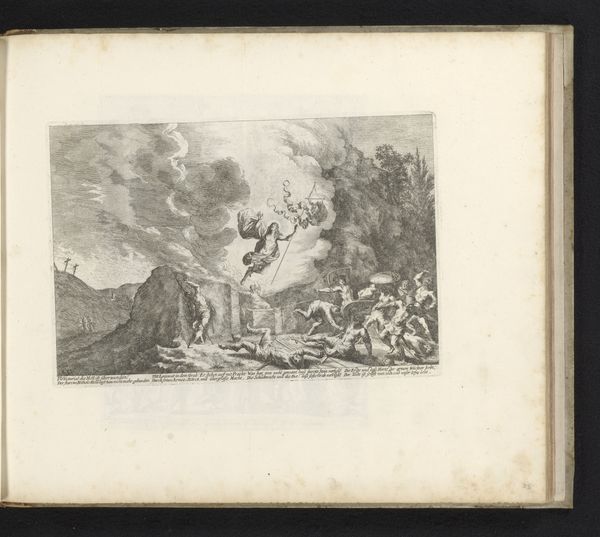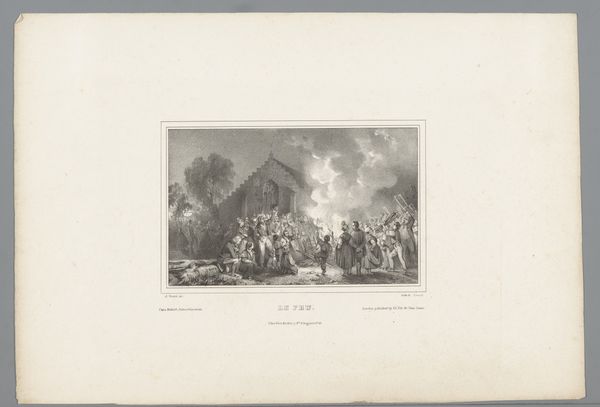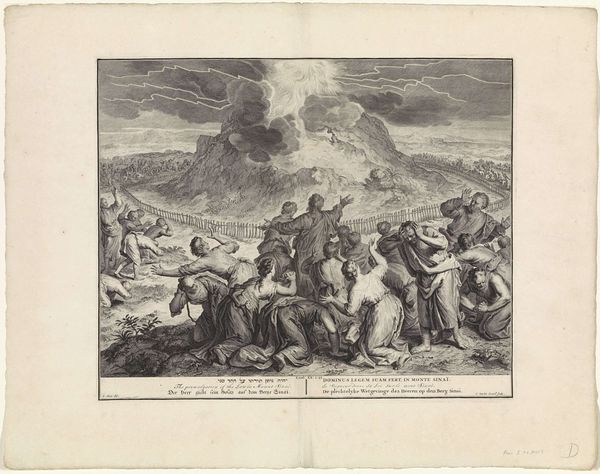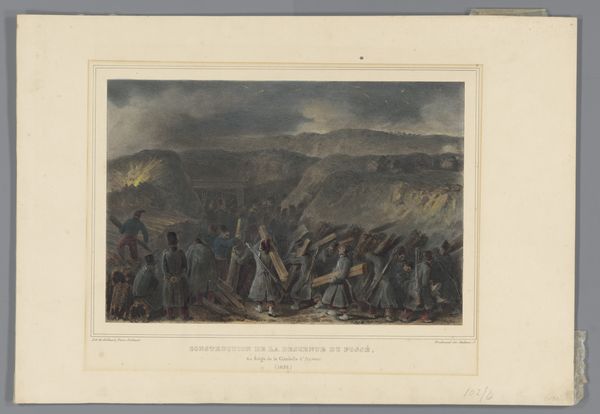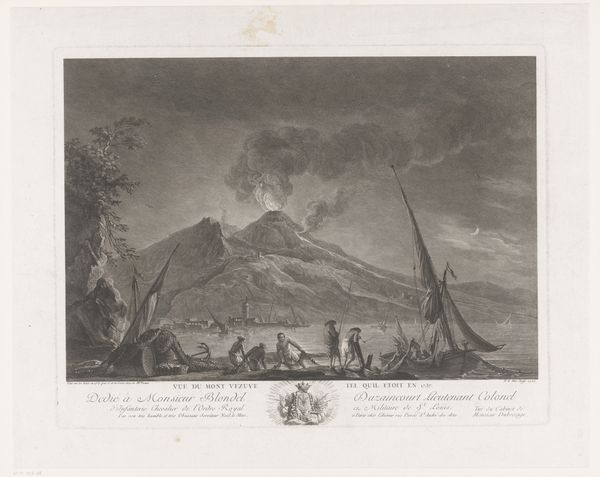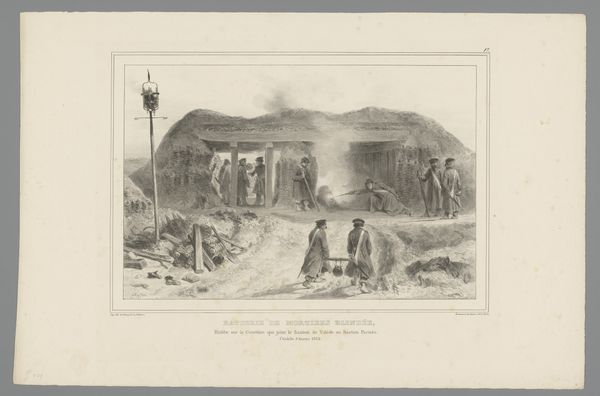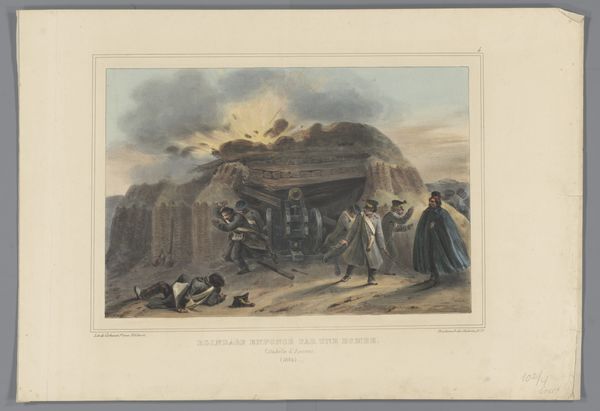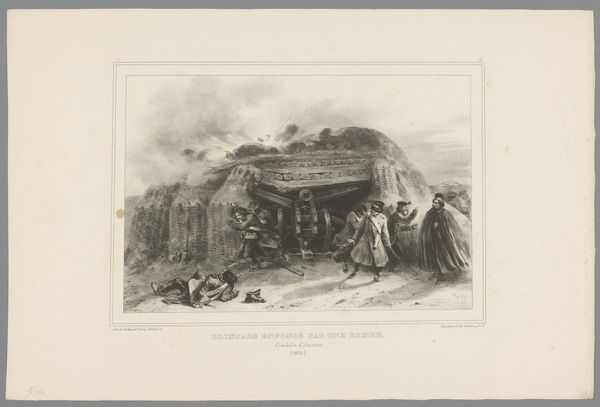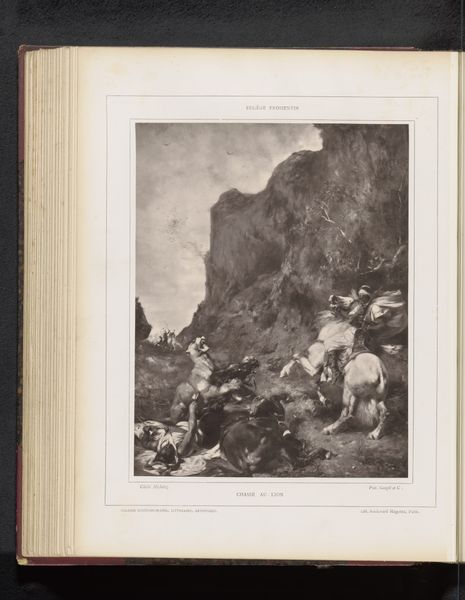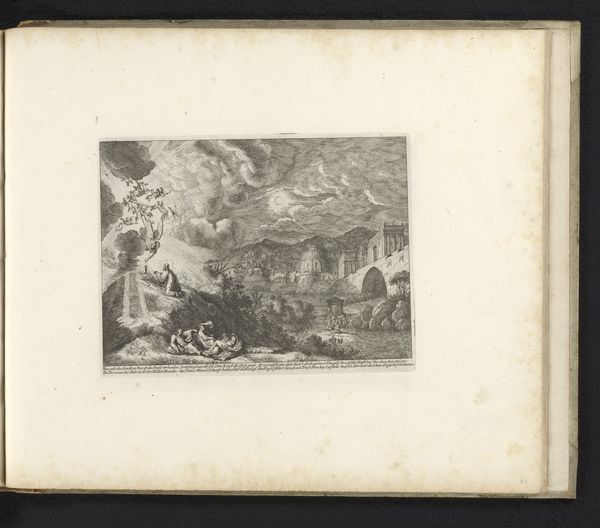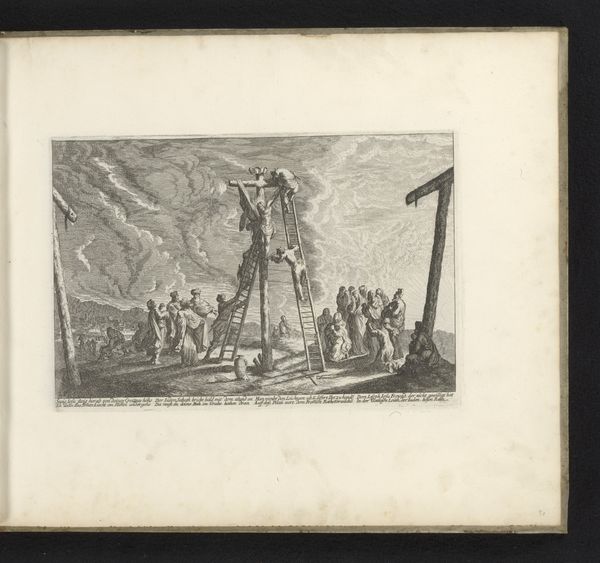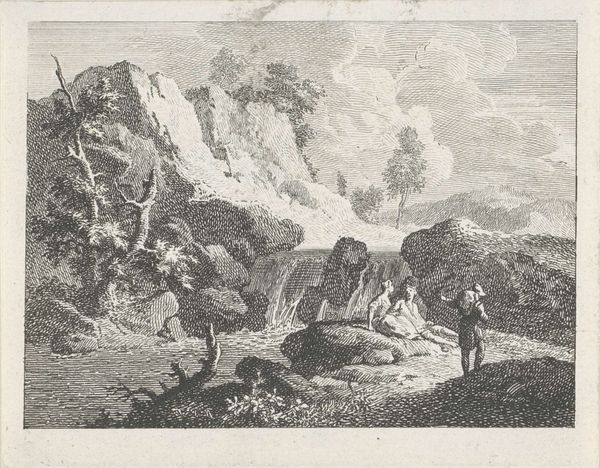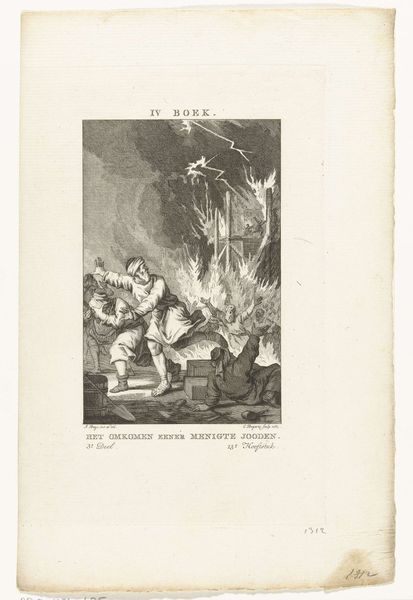
Fotoreproductie van een prent van mensen die de Vesuvius beklimmen before 1879
0:00
0:00
giorgiosommer
Rijksmuseum
Dimensions: height 251 mm, width 201 mm
Copyright: Rijks Museum: Open Domain
Curator: This is an albumen print, “Fotoreproductie van een prent van mensen die de Vesuvius beklimmen,” by Giorgio Sommer, created before 1879. It resides here at the Rijksmuseum. It looks to me as if the artist documented the act of ascending Mount Vesuvius in Italy during that period. Editor: What immediately strikes me is the stark contrast between the dark, smoky peak and the lighthearted leisure activity occurring on its slopes. It's like a dance between destruction and recreation, a commentary perhaps, on the oblivious nature of privilege. Curator: Indeed, and consider Vesuvius itself—a loaded symbol. For centuries, volcanoes have signified divine wrath and the precariousness of human existence, a reminder of forces far beyond our control. Its placement at the core hints at our paradoxical fascination with danger. Editor: Precisely. Note the romanticized depiction of these travelers, seemingly unfazed, against the backdrop of an active volcano. The romanticism present is hard to ignore, though I wonder how many of these tourists were aware of the colonial underpinnings of tourism. Access like this rarely exists without exploiting local labor. Curator: Certainly, these fashionable figures—carefully posed, meticulously dressed—convey an idealised vision, a carefully constructed tableau rather than a spontaneous scene. I suspect this is not accidental at all; note that this particular work captures the essence of a fleeting moment yet freezes it indefinitely through photographic art. Editor: That freezing transforms the active volcano, that is in its essence change, flux, a material that shifts under human activity, into just another backdrop. What gets centered is a moment of fashionable leisure and consumerism in a dangerous place. How complicit is the artist in it? Curator: Well, the print could itself be interpreted as another symbol of commodification – turning the grand tour into a portable keepsake. It brings this exotic journey home and shares it as both proof and prize. Editor: So, we could be seeing layers here: first, that landscape's representation of both power and the sublime, its visual manifestation captured through the print as it caters to Europe's expanding tourism industry, its power consolidated within that tiny printed rectangle that also displays class. It creates its own closed, self-validating world. Curator: Agreed, but it does open up discussion and the potential for varied meanings too. Editor: Of course; viewing the work, for me, brings awareness to some complex connections around privilege and power—I’ll carry those observations with me. Curator: Yes, a rich tableau indeed – this brief stop reminds us to look for multiple interpretations within iconic symbols, and cultural narratives.
Comments
No comments
Be the first to comment and join the conversation on the ultimate creative platform.
